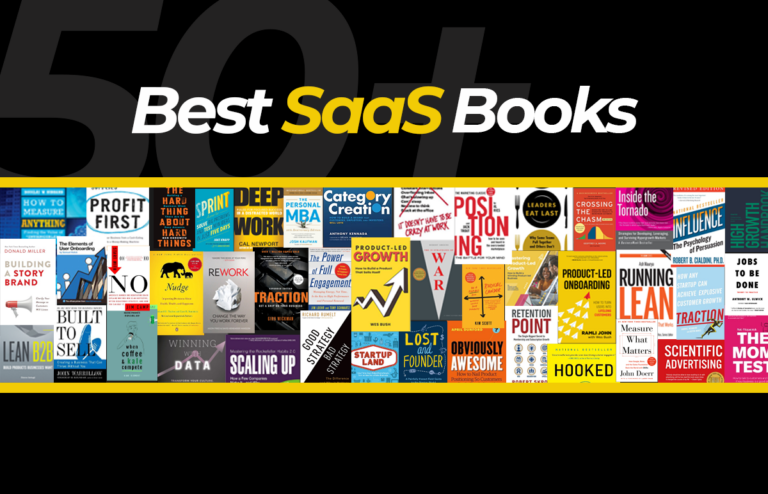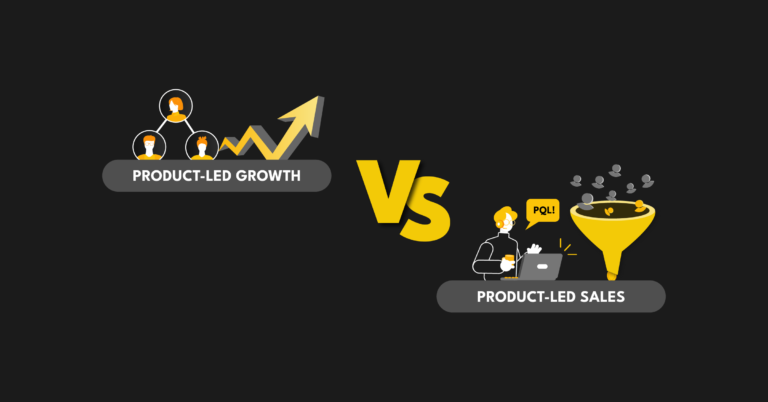Product-led content is any kind of content that weaves your product into the narrative to solve a problem.
Anyone can implement a product-led content marketing strategy, but not everyone can do it the right way. If you head too far down the wrong path, you’ll look back and realize that you wasted time and money.
When it comes to product-led content marketing, content drives the experience. But the goal isn’t just delivering the message – it’s delivering value.
You want prospects to learn from your content and take away a valuable lesson. Doing so is how you prove your expertise, build your brand, and position your product-led growth (PLG) company as an industry leader.
What Is Product-Led Content, and What Makes It Different?
There’s no right or wrong way to define product-led content. You must determine what it means to your SaaS company and then use it to your advantage.
One variable never changes – product-led content is designed to drive experience and provide value. So, no matter your approach, it should be rooted in these two details.
Content is a powerful weapon. Don’t use it to deliver empty messages. Use it to provide value, engage your audience, and maximize results.
The Importance of Delivering Value Through Content
Value, value, value. Keep this word in your mind when creating content for your product-led company. Here’s why delivering value is critical to your success:
- Valuable content is a natural pathway toward signing up for your product.
- Valuable content is engaging, and engaged readers are more likely to buy.
- Valuable content positions your company as a thought leader in your industry.
As for the “how,” there’s no shortage of options.
Take Typeform, a SaaS company that helps users grow their businesses with forms, quizzes, and conversations.
The “Resources” menu is full of links to several informative guides. Here’s the table of contents for Typeform’s Survey Design 101 guide:
By the time you reach the end of the guide, you’ll have a solid grasp of how to design a survey. And if you’re ready to do just that, you can click “Start creating” at the bottom.
Like the example above, product-led content doesn’t just lead readers to sign up. It keeps them on the website, increasing the likelihood that they’ll sign up. And, of course, high-quality content is critical to becoming an industry thought leader.
How to Correctly Use Content in Your PLG Strategy?
In your PLG strategy, unique content with a rational narrative will always outperform standardized online content.
Don’t expect “same old, same old” content to resonate with your audience. Connected and quality content is essential for guiding the reader toward your end goal of activation.
Connected Content Is the Name of the Game
You don’t have to look far to realize that content is everywhere. A quick Google search for one of your target keywords will prove that. Related content will help you elevate your brand.
SaaS companies utilize various forms of content to onboard users.
A blog post is content. A webinar, while not written, is also content. All the content types are connected, and you must find ways to tie them together if you want to manage an effective strategy.
For example, inside the Product-Led Growth Benchmarks 2022 report from ProductLed, users are directed to a blog post for an in-depth look at product-led growth itself.
Focus on Quality Over Quantity
Every brand, even if they don’t realize it, is working with content in some way, shape, or form. This is why you must create industry-leading content that positions your brand as an authority.
Quality over quantity is the right approach in a competitive online environment where users want to be engaged and control their purchasing experience. One high-quality, ultra-engaging guide is better than five so-so blog posts that only touch on the surface of the subject matter.
Content Strategy Pillars for Every Product
Are you wondering what quality means in the sense of content creation? Three things come to mind:
1. Narrative
Create a brand narrative that allows you to tell the same story across all forms of content. This planning will enable you to accurately show your company’s value before your product’s value, and it helps build trust.
Don’t take your narrative down a different path with different types of content. Keep it consistent. Your landing pages should match your newsletter. Your newsletter should match your video content and podcast.
2. Simplicity
The easiest way to ensure your audience understands the message is by keeping it simple. Many product-led companies misstep here by overcomplicating their narrative. Whether in your copy or visual elements that compose the message, strive for a simple, concise approach.
3. Consistency
Each piece of the strategy must make sense as if they were one, so the receiver won't be confused when receiving communication in different formats. This goes along with creating your brand narrative.
If your blog posts convey one message, but your landing pages convey another, you can expect visitors to your website to become confused. When that happens, your chance of converting them into paying customers takes a hit.
Finding the Motivation Behind Your Product
A core ingredient to successful product-led content marketing is an understanding of the motivations behind your product.
In the example above, a company has three products (A, B, and C). These products are part of the company’s narrative and within the product’s narrative. Doing so is important because people buy what they believe in. Success isn’t likely to follow if they don’t buy into your company and product narrative.
Content Marketing Examples From Real Companies
The following examples showcase great content marketing strategies in action.
Sherlock
Let’s begin with a simple but powerful example from Sherlock.
Nearly every blog post is designed to move readers through the buying funnel – even if they don’t realize it. Once you navigate from the blog to the company’s main page, there are two prompts: start a free trial and get a demo.
Sherlock doesn’t create content just for the sake of doing so. Every word moves the reader closer to taking action.
SurveyMonkey
If you take only one thing away from this example, let it be how SurveyMonkey puts its product at the center of everything. Of course, this is easier as a product-led company, but there’s no denying the thought that’s gone into this.
And it’s not just SurveyMonkey’s email sequence that is an excellent example of how product-led organizations should do content marketing. I consider SurveyMonkey’s blog one of the best in the world, thanks to its high-quality, product-centric content.
Atlassian
Whenever I access Atlassian’s website, I am amazed by the quality and diversity of the content. No matter the complexity of the subject matter, the company remains laser-focused on keeping its product as the focal point.
Every piece of content they produce is related to something they already do or plan on doing in the future. As you can see in the image, this includes Atlassian University, microsites, podcasts, blogs, and general communications.
As you review Atlassian’s content, you’ll realize its message is simple. It’s all about moving the reader toward one of its products, and you’ll see it in every piece of content you read.
How To Create Relevant Content for Your PLG Strategy
Do you remember when I mentioned “connected content” above? Knowledge of different content categories is important, but it’s what you create in the end that really matters. Your content must be relevant and connected to your PLG strategy if you want it to deliver results.
Use your product as the starting point to develop content. Let it guide the type of content you create and the details you share.
For example, if your product helps online marketing agencies track their search engine rankings, blog post ideas include:
- Top 10 Google Ranking Factors and Advice on How to Reach Position #1
- Search Engine Optimization in 2022: How to Implement a Modern Strategy
- SERP Basics: Search Engine Results Pages Explained
From there, move to pin down two or three primary goals. The example above includes “retain” and “attract.”
To attract your target user, you can then create content for your market that focuses on main features, secondary features, and customer pain points.
Common pain points include the inability to accurately track search engine rankings and the time-consuming nature of manually doing so.
Don’t jump the gun and take a scatter-gun approach to product-led content marketing. A defined, logical strategy backed by research will put you on the right track.
How Do You Create Content for Your PLG Strategy?
To sum it up, here are the three details you must focus on when creating content to drive your PLG strategy forward: connected content, quality over quantity, and a content strategy pillar for every product.
Do you want to learn more about using content marketing for product-led growth? Sign up for ProductLed’s free Product-Led Fundamentals course.













